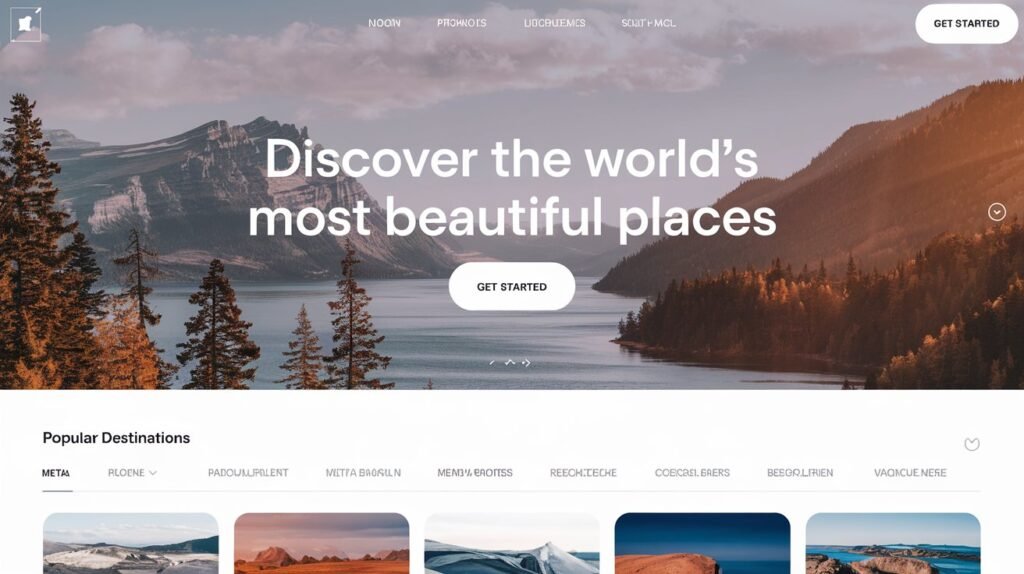15 SEO Tips for Travel Blogs That Drive Traffic & Sales
Master SEO tips for travel blogs to boost traffic, engage readers, and drive affiliate sales. Write optimized travel content that ranks high today!
Introduction: The Magic of SEO in Travel Blogs
Are you struggling to bring more eyes to your travel blog? Or perhaps your affiliate sales aren’t taking off as expected? Whether you’re writing dreamy destination guides or affiliate-packed packing lists, mastering SEO tips for travel blogs can transform your content into a magnet for readers and revenue.

But here’s the kicker: it’s not just about stuffing keywords—it’s about strategy. Want to know the secrets to driving traffic and conversions? Buckle up, because this guide has it all.
Table of Contents
- Why SEO Is Vital for Travel Blogs
- Understanding Your Audience
- Using Long-Tail Keywords Effectively
- Crafting Captivating Headlines
- Optimizing Blog Structure for Search Engines
- Mastering Image SEO for Travel Blogs
- Writing with Affiliate Sales in Mind
- Using Internal and External Links
- Mobile Optimization Is a Must
- Leveraging Local SEO for Travel Blogs
- Writing Engaging Meta Descriptions
- Creating Content with Reader Intent
- Harnessing Social Media for Traffic
- Updating Old Content for SEO Gains
- Tracking Progress with Analytics
Why SEO Is Vital for Travel Blogs
Imagine writing the perfect guide to a hidden gem in Bali, but nobody finds it. Painful, right? That’s where SEO tips for travel blogs come in. By optimizing your content, you ensure your blog reaches people searching for exactly what you offer—whether it’s travel inspiration, tips, or recommendations.
The travel blogging space is crowded, so getting your blog to rank high on Google isn’t just important—it’s crucial. And here’s the good news: SEO isn’t rocket science. With the right strategies, you can climb those search rankings, attract travelers, and convert them into loyal readers or buyers.
Understand Your Audience Like a Pro
Think about it: Why do travelers visit blogs? Is it to find out the best time to visit Paris? The cheapest flights to Tokyo? Understanding your audience’s search intent is the first step. Use tools like Google Trends or Answer the Public to uncover what your readers are searching for.
For instance, if most of your readers are backpackers, focus on budget-friendly travel guides. This alignment between their needs and your content boosts relevance and makes SEO tips for travel blogs even more effective.

Use Long-Tail Keywords for Travel SEO
Here’s the deal: single keywords like “travel” or “Italy” won’t cut it anymore. They’re too competitive. Instead, focus on long-tail keywords like “best travel tips for Italy in summer.” These phrases have lower competition but higher intent—meaning the people searching for them are ready to engage.
Sprinkle these keywords naturally in your headings, body text, and meta descriptions. A well-placed keyword like SEO tips for travel blogs can make your content pop in search results.
Craft Headlines That Hook Readers
Your headline is your blog’s first impression, so make it count. Numbers work wonders (like this article’s title), as do power words like “amazing,” “ultimate,” or “proven.” Incorporate the focus keyword naturally, like:
- “10 Proven SEO Tips for Travel Blogs You Can’t Miss”
- “How to Write Travel Blogs That Rank with SEO Tips”
See what I did there? You grabbed attention while sneaking in that all-important keyword.
Optimize Blog Structure for Search Engines
Google loves clean, organized content. Break your post into scannable sections using H3 headings (just like this one). Tools like Yoast or Rank Math can guide you in structuring your content.
Don’t forget your URL structure, either. A slug like travel-blog-seo-tips works better than something generic like blog123.html.
Make Image SEO a Priority
What’s a travel blog without jaw-dropping visuals? Gorgeous photos are a must, but they also offer an untapped SEO opportunity. Use descriptive alt text with keywords. For example:
- Alt Text: “A serene sunset in Bali – travel blog SEO tips for better rankings.”
Compress images to improve loading speed, too. A slow-loading page is a turn-off for readers and search engines alike.
Write with Affiliate Sales in Mind
Here’s the tricky part: writing for both search engines and affiliate conversions. First, prioritize useful, engaging content. Your readers should feel like they’ve struck gold with your blog. Then, strategically place affiliate links where they add value.
For example, if you’re recommending travel gear, write something like:
“Looking for the best travel backpack? This one fits perfectly under airplane seats and has thousands of rave reviews.”
Use Internal and External Links Wisely
Linking is like networking for your blog—it builds authority. Link to your own related posts (internal linking) and to high-quality external sources. For instance, link to an official tourism board or a trusted airline site when relevant.
But don’t overdo it. Spammy links are a big no-no. Always aim for quality over quantity.
Make Your Travel Blog Mobile-Friendly
Think about how you plan your trips. Chances are, you’ve searched for something on your phone while on the go. Mobile optimization is critical for travel blogs.
Use responsive themes and test your blog on different devices. A mobile-friendly site improves user experience and gives you an SEO boost.
Leverage Local SEO for Specific Travel Guides
When writing about specific destinations, use local keywords. For example:
- “Best budget-friendly restaurants in Barcelona.”
Mention landmarks, local experiences, or insider tips to help your blog appear in location-based searches. Local SEO is a game-changer for travel blogs.
Engage Readers with Powerful Meta Descriptions
Your meta description is like a movie trailer—if it’s boring, nobody will click. Include your focus keyword and keep it enticing. For instance:
“Discover SEO tips for travel blogs that attract traffic and boost affiliate sales. Learn how to create content that travelers will love!”
Create Content That Matches Reader Intent
Not all readers are the same. Some want quick answers; others want detailed guides. Structure your blog accordingly. Use short, actionable tips for listicles or longer storytelling formats for destination guides.
Matching reader intent makes your blog more valuable and increases the time users spend on your site—a key ranking factor.
Harness Social Media to Drive Traffic
Social media isn’t just for selfies—it’s a goldmine for promoting your travel blog. Share your posts on platforms like Pinterest, Instagram, or TikTok. Use hashtags like #TravelSEO or #TravelTips to get discovered.
Social shares also send positive signals to Google, which could help boost your rankings.
Don’t Let Old Content Collect Dust
Have an old post about “10 Packing Tips for 2020”? Update it with fresh insights for 2024! Refreshing old content is one of the easiest ways to improve your rankings.
Track Your Progress with Analytics

Finally, don’t fly blind. Use tools like Google Analytics to see which posts perform best. Look for patterns—do listicles perform better than stories? Use this data to refine your approach.
Conclusion
There you have it—15 actionable SEO tips for travel blogs to drive traffic and affiliate sales. By understanding your audience, using long-tail keywords, and optimizing every element of your blog, you can stand out in the crowded travel niche.

So, what are you waiting for? Start implementing these tips today and watch your blog grow. And don’t forget to share your success story with us in the comments!
#TravelBlogging #SEO #TravelTips #AffiliateMarketing #ContentMarketing #TravelSEO #SEOForBloggers
